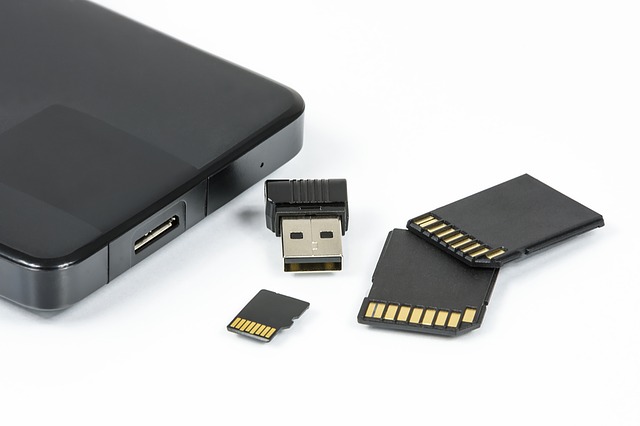
Memory Storage Devices and Media
Primary Memory
• It is accessible by the Central Processing Unit (CPU) directly.
• It is the main memory in a computer system.
• It is faster than secondary storage.
• Generally, primary memory refers to the RAM of the system.
• Examples include RAM and ROM (solid-state).
Random Access Memory (RAM):
• The RAM holds all the files and applications that are running on the system including the OS.
• It can be accessed randomly.
• It is a volatile memory that is wiped off once the computer system is powered off.
Read-Only Memory (ROM):
• It is a non-volatile memory and it contains the data even after the computer is turned off.
• It is a read-only memory and data stores in it permanently.
• It stores the programs for the boot up, BIOS (basic input/output system) and the operation of peripheral devices.
Secondary Storage
• It is a non-volatile memory that is used by the computer to have more storage space.
• Data in this memory remains as it is even when the system if powered off.
• The data in it also remain unchanged until it is deleted or modified.
• It is also known as auxiliary or external memory.
• It stores data and programs.
• Examples include Hard Disk Drive (HDD) and Solid-State Drive (SSD).
Off-line Storage
• It refers to the storage devices that need to be inserted to the computer system in order to access, edit or delete the data.
• This type of storage is generally used to transport data files and to take a backup of important data.
• Examples include removable HDD/SDD, flash drive, CD, Blu-ray, etc.
Types of Storage Devices
1. Solid State Storage (SSS):
• It stores data electronically and does not have any moving parts.
• It is made of silicon chips.
• It uses less power and produces less heat.
• It can be found in three types i.e. drives, cards, and modules.
• The transfer of data is much faster because of no mechanical parts.
USB Flash Drives:
• It is also known as a pen drive.
• It connects to the computer system using a USB port.
• It comes in many storage sizes and provides an easy way to transport the data.
Memory Cards:
• Memory cards are the solid-state storage that comes in different sizes like flash drives.
• However, these cards require a card reader to read its content.
• The most common use of these cards is in digital cameras to store pictures.
Solid State Hard Drives:
• These hard drives don’t have any moving mechanical parts.
• The data is handled using flash memory chips.
• It offers high reliability, uses less power and faster data access.
2. Magnetic Storage:
• It is the most common form of storage device that is a mechanical device that connects to the computer system.
• It uses magnetization patterns to store data in a magnetizable material.
• In these storages, data is accessed using one/several heads.
• The magnetic field is manipulated to store data in the magnetic storage device.
• Floppy drive is one of the examples of magnetic storage that is no longer in use in modern computers.
3.Optical Storage Devices:
• In these devices, data is stored as patterns of dots.
• Light is used to read this stored data from the device e.g. a laser beam.
• The light beam bounces off the surface of the medium to read the data.
• The light reflects differently in the case of a dot and an empty surface.
• The process to mark the surface using the light beam is known as ‘burning’.
CD ROM:
• It stands for Compact Disk – Read Only Memory.
• It is a non-volatile storage device therefore data cannot be modified or deleted.
• It can store up to 800 MB of data.
DVD ROM:
• It stands for Digital Versatile Disk – Read Only Memory.
• These devices can be used in the same way as CD-ROMs, but they can hold more data.
Blu-Ray:
• It is a high capacity optical disk and can hold up to 50GB of data.
• The double-layer Blu-ray can hold around 100 GB of data.
• It is used in the same way as CD and DVD ROMs but can store very high-quality HD videos.
• The ‘Blu’ represents the blue light i.e. used to read the data unlike the red light used in CD and DVD ROMs.
• Blue light has a shorter wavelength allowing more data to be stored in a close orientation.
